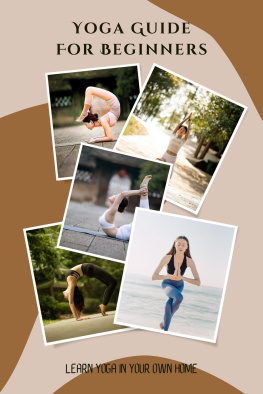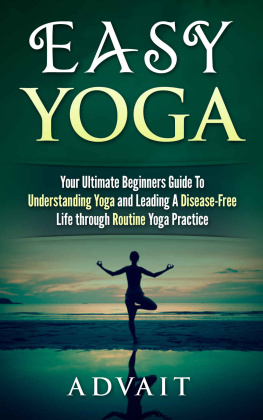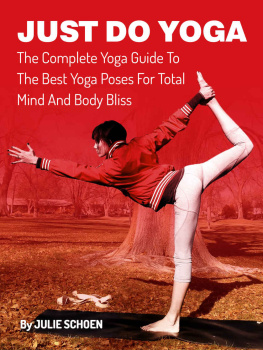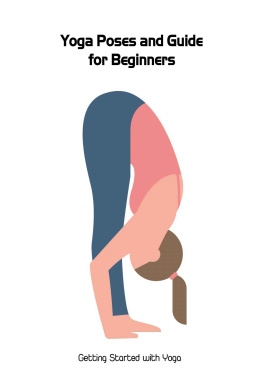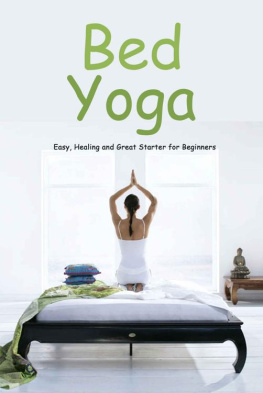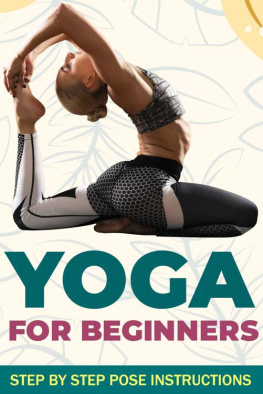All rights reserved. No part of this publication may be reproduced, stored in or introduced into a retrieval system, or transmitted, in any form, or by any means (electronic, mechanical, photocopying, recording, or otherwise) without the prior written permission of the copyright owner. The author acknowledges the trademarked status and trademark owners of various products referenced status and trademark owners of various products referenced in this work of fiction, which have been used without permission. The publication / use of the trademarks is not authorized, associated with or sponsored by the trademark owners
WHAT IS YOGA?
The definition of the term yoga is extremely difficult, although it is widely researched by many scholars and practitioners. The word 'yoga' comes from Sanskrit and can have several meanings:
Connection.
Union.
Self-control, focus.
Control.
Etc.
The term yoga is first encountered in the Katha, Taittiriya, and Maitrajani Upanishads .
Translated from Sanskrit, sutra means "thread", and in the scientific literature it is more of a guiding thread in the process of displaying thoughts, ideas, reflections. Due to the excessive increase of Vedic knowledge, the mahatmas are forced to systematize their views. The sutras are short and concentrated lessons, which does not mean that they are simple and easy to learn and understand. They are very clear, and, in principle, they should express the basic nature of things and aim to stop the flow of doubt. The short text, presented with very few words, aims to eliminate the darkness and ambiguity. Patanjali is the first Indian thinker to produce a systematic yoga teaching, though the sutras are the culmination of a collective tradition developed by many previous authors.
Yoga is one of the six orthodox Darana . The term Darana can be translated as a discipline or a system of knowledge, a view: it comes from the root drish - see contemplate, understand. As such, the Darana represent an exposition (defense) of different views in the field of philosophical knowledge. They are also scientific schools that systematize knowledge and develop the concept of the world according to the scientific views that underpin their system. All this shows that yoga is a discipline linked to and developed by the official caste of the Brahmin scholars.
According to the principles of the caste-divided Vedic society, Brahmins are people who are lawfully engaged in matters of knowledge without any other public duties (unlike the Shudras who are to do any kind of work or the Kshatriyas who are military). The original principles of a given philosophy do not change in time and innovations are not consciously sought and tolerated. This is so because true knowledge is already expressed by spiritual authorities, and in this sense efforts should be made to understand it and not to develop it arbitrarily as it is done from the distance of time and the development of cultural values and achievements.
Man is in the process of continuous movement and change, striving, consciously or not, for self-development and improvement. Life experience is how we unconsciously move forward, grow and evolve. Yoga, in turn, is a conscious, purposeful, volitional method for the simultaneous cultivation of body, mind, and spirit. Yoga, one of the most ancient life sciences, will teach you to manage stress on a physical, mental and spiritual level.
Asanas (poses) in yoga serve to oil the body. They provide smooth movement of the muscles and joints, flexion of the spine and the entire bone system. In addition to the musculoskeletal system, asanas tone all internal organs, affect the endocrine and nervous systems and improve irrigation without causing fatigue. The healing effect of yoga practice is easily understood as comparable to tooth brushing. When we use our body every day, mucus and sediment accumulate in the interior. If we never clean up these toxins, our health will begin to gradually deteriorate. Asanas cleanse the body from the inside, reaching the farthest corners by twisting, bending and folding, which burn different harmful substances. With regular practice, the body can maintain a good level of cleanliness and flexibility.
At an emotional and mental level, yoga asanas increase awareness of every part of the body. Just as plaque builds up on the teeth and arteries, various destructive emotions and thoughts of the past accumulate in us. The physical body is closely connected to the subconscious mind. When we enter the distant sleeping areas of the body, we find that the body itself is a reservoir of old memories, emotions, and habits. Samskaras (repetitive mental and behavioral stereotypes that are rooted in the subconscious) of harmful habits in the body and mind become rooted in the body and manifest themselves in posture, and posture in the form of tightness, stiffness, and pain. When asanas lead us to the source of old habits and confront fear, sadness, anger, or other traumatic emotions, we have the most effective therapy possible. With the help of regular yoga classes, we clear ourselves of mental and physical blockages without having to investigate why and how harmful samskaras appeared.
Thanks to the performance of the asanas, moods change. Our primary reaction to facing difficult situations is a desire to escape. Yoga trains the mind not to avoid difficult situations. In yoga, there is no place for defense mechanisms but the opposite. Asanas are designed to bring down all the protective layers and mechanisms that man builds up, to manifest the true nature and purity of our being. When a deep-rooted samskara is affected during a practice, a strong emotional reaction may follow. We do not need to analyze and ask why this is happening to us. All we need to do is live the present moment, fully.
MAIN PRINCIPLES AND DEFINITIONS
Pranayama, the yogic breathing exercises, infuse life into the body and give power over the mind, leaving behind a sense of cheerfulness and rest. Yoga teaches us how to control our breathing and make it a conscious process. Deep breathing has a direct effect on the nervous system. Long and slow breathing is associated with relaxation and the specific condition of the body and mind associated with good health and healing. The purpose of deep and slow breathing is to purify the body, release toxins and maintain an internal karmic fire. At the physical level, conscious breathing stimulates the cardiovascular system and improves the movement of blood flow to the body. Exhaling helps to remove toxins from the blood that passes through the lungs, and inhalation saturates the blood with high-oxygenated air. As we know, oxygen is needed to carry out and sustain vital processes in the human body. By inhaling and exhaling slowly, deeply and rhythmically, we stimulate the ability of the parasympathetic nervous system to calm the body and mind. Food, water, and air provide the fuel.
Full relaxation cools the body. Studies show that relaxing in Shavasana (the corpse asana) is a good remedy for high blood pressure.
Finally, meditation, another practice in yoga, soothes the mind; the engine of the body. Through meditation, you learn to master and ultimately overcome the boundaries of the body.
The yoga system consists of 8 stages:


